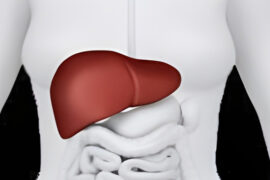A study presented at the ESC Congress 2023 investigated the link between neighborhood characteristics, cardiovascular disease (CVD), and premature death, using data from the PURE-China study. The research included 35,730 adults aged 35 to 70 from 115 communities in China (70 urban and 45 rural), between 2005 and 2009. Participants’ average age was 51, and 60% were female.
The National Center for Cardiovascular Diseases in Beijing, China, according to study author Dr. Mengya Li, “There is growing evidence that the neighborhood we live in affects our health.”
“This study highlights the importance of many aspects of our surroundings for heart health and longevity, including feeling safe, having shops, transport and parks close by, cleanliness, and feeling that our neighbourhood is a good place to live and to raise children.”
Researchers employed the Neighbourhood Environment Walkability Scale (NEWS) through in-person interviews to gauge baseline neighborhood data. The NEWS questionnaire comprised eight subscales, and a total score was calculated by summing up subscale scores, reflecting favorable neighborhood perceptions. After accounting for various variables like age, sex, education, income, health factors, and more, researchers analyzed relationships between subscales, overall score, and health outcomes.
During a median follow-up of 11.7 years, 2,034 all-cause deaths occurred (5.7%), with 765 linked to CVD, and 3,042 major CVD events (8.5%). A higher neighborhood environment score correlated with a 6% reduced risk of major CVD events and all-cause mortality, a 12% lower chance of dying during follow-up, and a 10% lower chance of dying from CVD.
The strongest connection between neighborhood attributes and health outcomes was observed with the “Safety from Crime” subscale. A higher score in this category was linked to a 9% lower risk of death during follow-up, a 10% lower risk of dying from CVD, a 3% lower likelihood of major CVD development, a 6% lower risk of heart attack, and a 10% lower chance of heart failure.
High scores across all subscales were associated with a lower risk of death during follow-up, with risk reductions ranging from 2% to 9%. Additionally, a high rating on the subscale measuring proximity to amenities was linked to a 1% lower risk of mortality. These findings underscore the importance of neighborhood safety and walkability in influencing cardiovascular health and overall mortality.
Dr Li said: “While some of the percentage reductions in risk are small, they affect large numbers of people and therefore could have a wide-ranging impact. The findings can be used by policymakers to take action to mitigate the adverse effect of poor community conditions on health, such as improving local amenities and transport connectivity, providing green spaces and street lighting, and building paths for walking, running and cycling.”
Disclaimer:
The information contained in this article is for educational and informational purposes only and is not intended as a health advice. We would ask you to consult a qualified professional or medical expert to gain additional knowledge before you choose to consume any product or perform any exercise.








